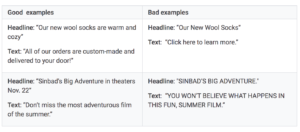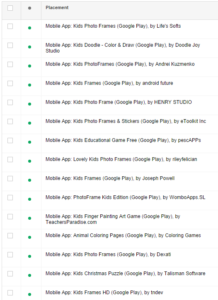The B2B conversion funnel can be very different than that of B2C. The purchasing decision and sales cycle as a whole can take much longer. First, because there is more than one decision maker. When purchases are made, they’re usually signed off by multiple stakeholders. Once they do sign off, contracts need to get sent through legal departments as well. The average B2B sales cycle is 84 days, meaning it could be a long time before the company is actually using your product or service. B2B marketing can seem a little more complicated than B2C at first, but with the right strategies and tactics in place, it can easily be simplified.
B2B Paid Search Tips:
Multiple messaging points across the funnel
Because there are usually multiple people that have to approve the purchase decision, it’s important to have relevant messages for the appropriate audience at each stage of the funnel. Those that are in the early exploring stages are likely to respond to upper-funnel messaging, that don’t require a strong push to sell. As they get further into the funnel and are looking for specific reviews or comparing costs, they are usually more inclined to convert when presented with a strong CTA.
Branded and competitor keywords
If you don’t organically rank number one for your brand searches or aren’t well-known in your industry, bidding on your branded keywords is a must. Even if you are, bidding on branded keywords can have many benefits, especially when targeting B2B searchers. It gives you full control over your message and allows you to direct users to the ideal landing page.
It’s expected to have generic keywords relevant to your services, but you might want to drop in competitor-based keywords as well. CPCs may be higher than branded keywords, but they are often cheaper than generic. When a user searches for a competitor, they’re likely just looking for what they have to offer. Bidding on their keywords gives users more results and alternatives. This can be especially beneficial if you’re not well-known organically. Since your target market may not be aware of you yet, bidding on competitors they are searching for will get you immediate visibility.
It’s important to keep a close eye on your keyword performance. If CPCs for competitor phrases are getting too high, or soaking up all your budget without producing conversions, you may no longer want to bid on those phrases. A/B test many sets of keywords, find which perform best, and allocate your budget appropriately.
Tracking and attribution
The most difficult part of running B2B paid search can be tracking and attributing your leads, clients, and sales back to specific campaigns, audiences, keywords, etc. Identifying where sales and revenue come should be clear with an ecommerce strategy, as long as tracking is set up correctly. Tracking and attribution for lead generation campaigns can get a bit more complicated. They key is collecting data from multiple sources, then bringing it back together to get a clear picture of performance.
There are many different tools and strategies to track and attribute paid search performance. A simple way to track performance is by directly dropping UTM data into a URL. If you’re unfamiliar with this practice, Google’s URL Builder Tool is a good place to start. This strategy allows developers to pull the data through the website form completions, pull that into your CRM, then complete the attribution process separately.
There are many attribution models. The most popular used on Google are data-drive, time-decay, and position-based. Data-driven uses the publisher’s machine learning algorithms to precisely calculate and assign partial credit to different touch points in your funnel. While this is an effective strategy, there are volume requirements. Those Being 15,000 clicks and 600 conversions over the past 30 days and 10,000 clicks and 400 conversions per month. The other models may be better for businesses that have smaller volume.
Time decay assigns credit to different touch points through the funnel, giving more weight to the most recent touch points, and less for the older ones. This may be most beneficial for highly competitive B2B spaces, as closed deals hold more importance than initial leads. Position-based attribution assigns 40% credit to the top of the funnel, 40% to the bottom, and 20% to the middle of the funnel for a conversion. Since this strongly emphasizes top and bottom funnel interactions, it makes sense for businesses where initial leads are just as important as closed deals.
Re-Marketing
In B2B, it’s especially important to nurture leads once they have entered into the sales funnel, but with relevant messages. You don’t want to serve these prospects with top-funnel messages that are no longer apply to them. That’s why you should create re-marketing lists for every stage of your sales funnel. The messages should differ slightly based on where the prospect left off in the sales funnel. It can be beneficial to create separate landing pages for re-marketing campaigns as well. This allows you to craft your message and specifically target those that have seen the original ad, but didn’t initially convert. These strategies can be used for post-purchase marketing as well. It’s always more expensive to acquire a new customer than to keep an existing one. There are plenty of opportunities to turn first-time purchasers into long-term, loyal clients. Consider cross-selling, up-selling, renewing, limited offers, etc.
Conclusion
At first glance, B2B marketing can seem much more complex than B2C. Longer sales cycles and multiple purchase decision makers can seem intimidating, but it just requires a different outlook. Take a holistic look at your firm’s entire sales journey. Collate the relevant data for every touchpoint and start crafting the campaigns that will fit best, ultimately driving more leads and sales.
Sometimes, even B2B companies need outside help. At Onimod Global we are experts in all aspects of SEM. With our expertise and unique cross-channel digital marketing campaign strategies, we can power entire corporate marketing departments, or provide custom solutions for local businesses. If you’re struggling with paid search, SEO, social media, automation, web dev, or any other aspects of digital marketing, Onimod Global is here to help.
Learn more about what we do, take a look at some of our work, or start your conversation with us today!



